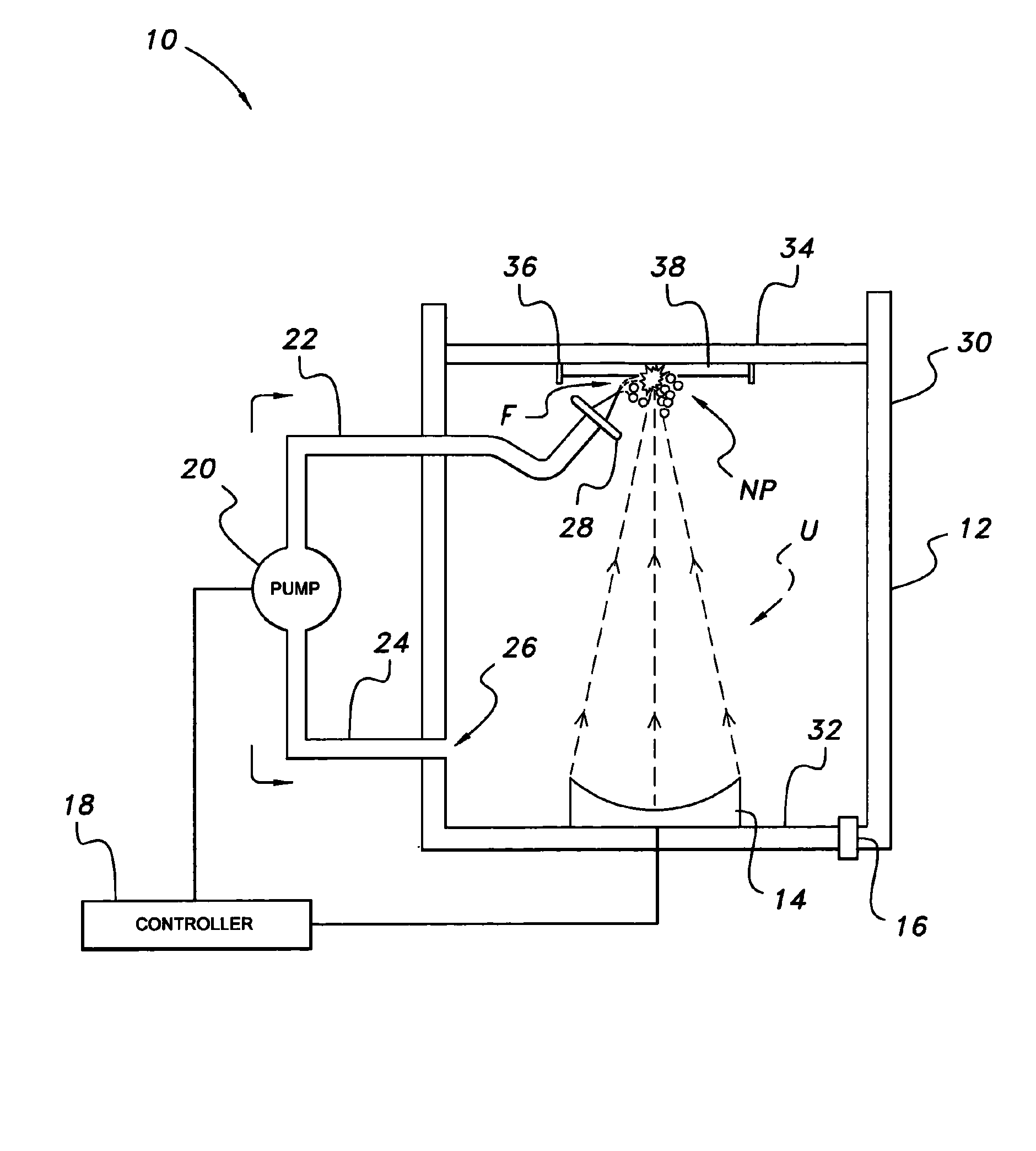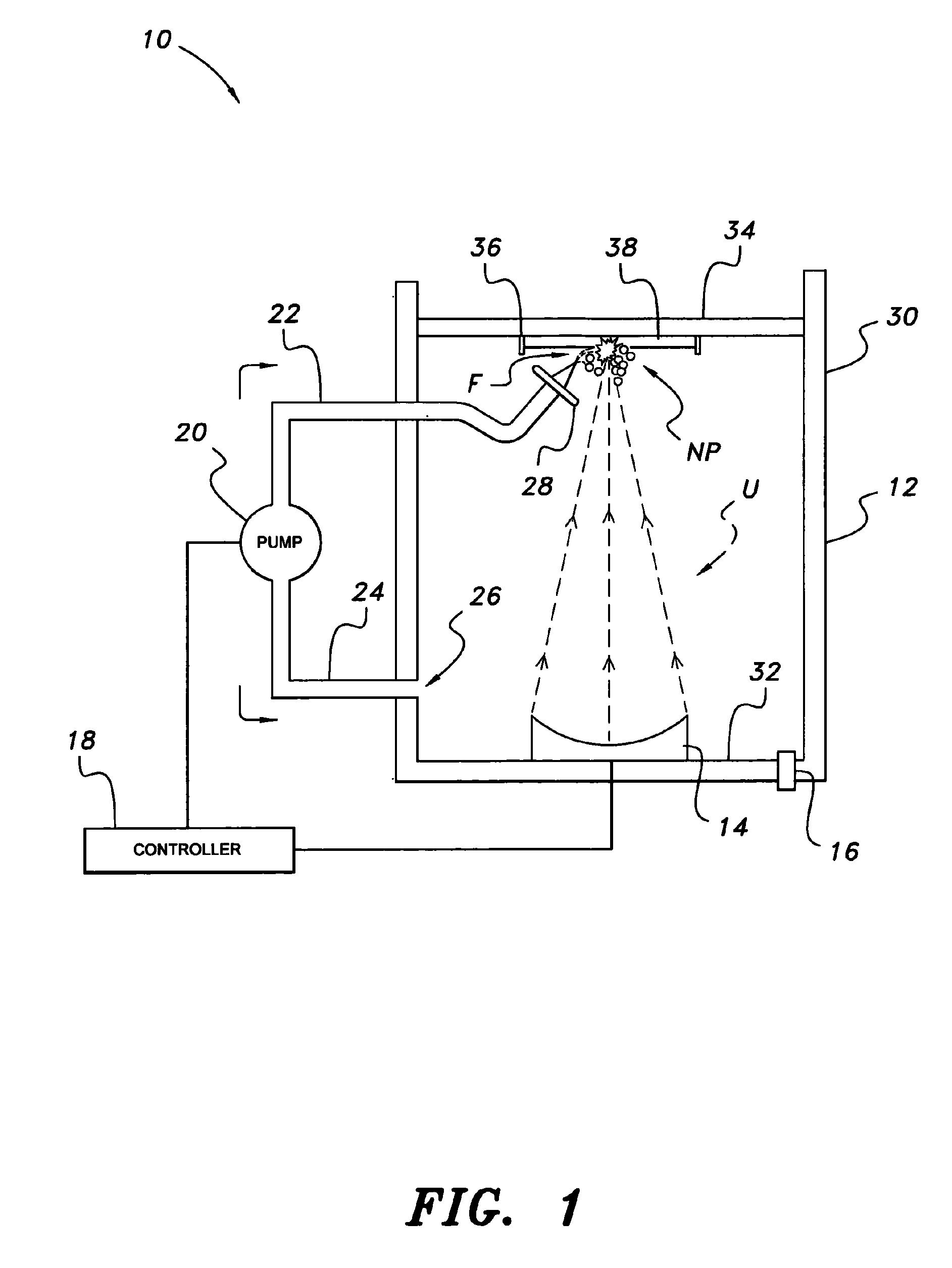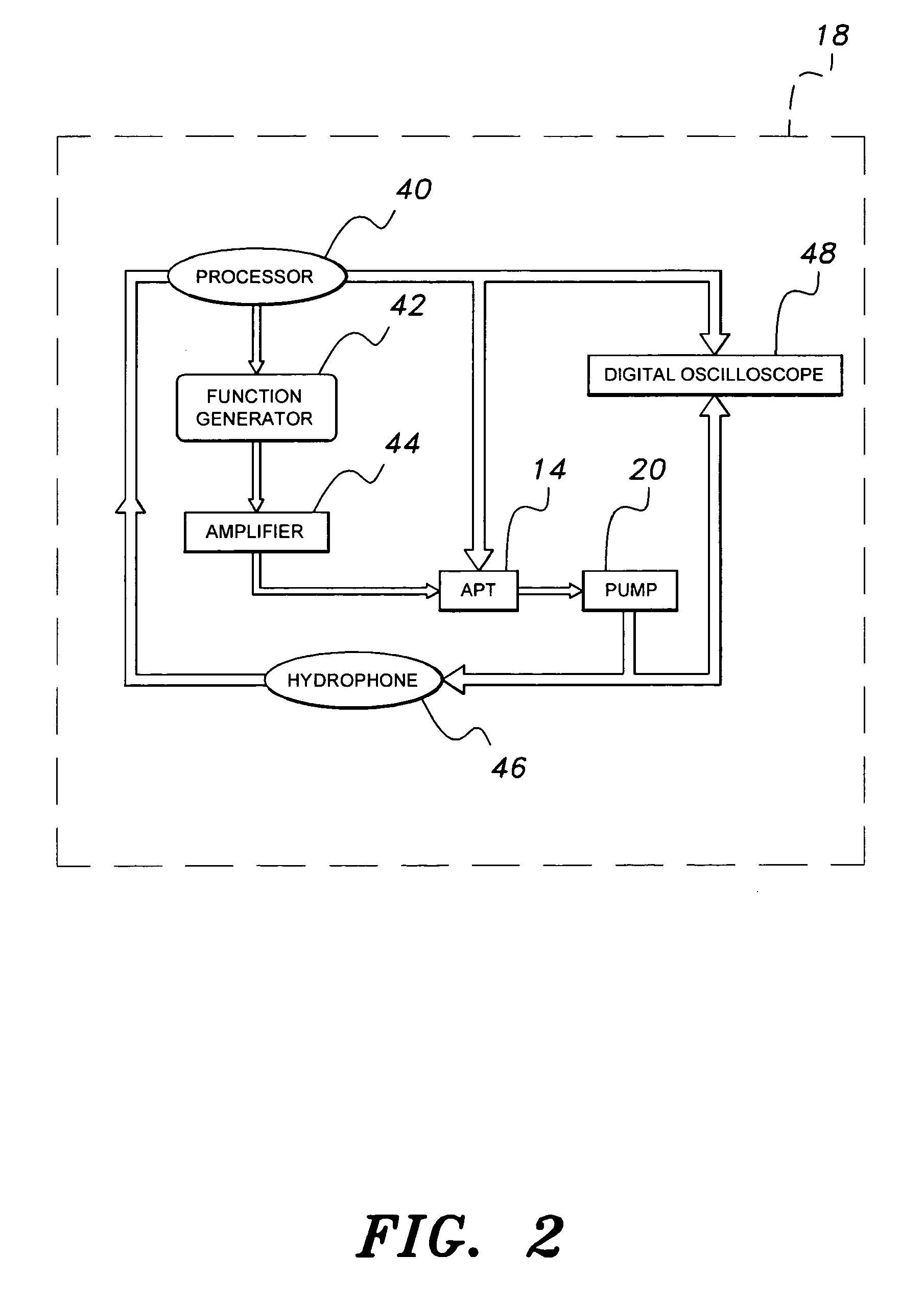System and method for producing nanomaterials
a nanomaterial and system technology, applied in the field of nanoparticles, can solve the problems of cracks in the material surface, solid material eroded, cracks in the material, etc., and achieve the effect of reducing costs, time and energy
- Summary
- Abstract
- Description
- Claims
- Application Information
AI Technical Summary
Benefits of technology
Problems solved by technology
Method used
Image
Examples
Embodiment Construction
[0025]FIG. 1 illustrates a system for producing nanomaterials 10. A hollow housing 12 is provided, the housing 12 being formed from stainless steel or any other suitable material that will not rust, corrode or react with the fluids and nanomaterials to be described in detail below. The housing 12 includes a lower wall 32, at least one sidewall 30 and an upper wall 34 forming an enclosure that defines an open, interior region therein.
[0026]A material sample 38 is releasably secured to the inner surface of the upper wall 34 by a sample holder 36, which may be a clip, a clamp or any other suitable releasable holder for grasping a material sample. Sample 38 is the raw material sample from which the nanomaterials will be produced. The sample holder 36 may be fixed with respect to upper wall 34, may be selectively and controllably rotatable relative to upper wall 34, or may form part of a movable platform. Preferably, the sample holder 36 is rotatable, allowing for user control over the s...
PUM
| Property | Measurement | Unit |
|---|---|---|
| frequency | aaaaa | aaaaa |
| frequency | aaaaa | aaaaa |
| frequency response | aaaaa | aaaaa |
Abstract
Description
Claims
Application Information
 Login to View More
Login to View More - R&D
- Intellectual Property
- Life Sciences
- Materials
- Tech Scout
- Unparalleled Data Quality
- Higher Quality Content
- 60% Fewer Hallucinations
Browse by: Latest US Patents, China's latest patents, Technical Efficacy Thesaurus, Application Domain, Technology Topic, Popular Technical Reports.
© 2025 PatSnap. All rights reserved.Legal|Privacy policy|Modern Slavery Act Transparency Statement|Sitemap|About US| Contact US: help@patsnap.com



